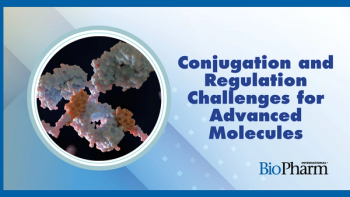
- BioPharm International-08-01-2012
- Volume 25
- Issue 8
Discovery Pipeline: Topical Delivery of siRNA
A team from Northwestern University has demonstrated the feasibility of topical delivery of small interfering RNA (siRNA).
A team from Northwestern University has demonstrated the feasibility of topical delivery of small interfering RNA (siRNA) in a July 2012 publication online in the Proceedings of the National Academy of Sciences. To date, the biggest hurdle in developing (siRNA) therapeutics to effect gene knockdown in vivo has been designing an effective delivery system. While lipid nanoparticle delivery systems have shown some success, use of this platform has been confined to targets in the liver, where the lipid nanoparticles are most efficiently taken up. Targeting other tissues has been more difficult.
To get siRNA to penetrate the skin, the researchers used a delivery system where siRNA strands were arranged symmetrically around a gold nanoparticle and covalently immobilized to form a spherical structure. In this arrangement, the siRNAs are densely packed and highly oriented, and the particles are readily taken up by skin cells. The spherical nucleic acid nanoparticle conjugates could be delivered in saline to cultured cells or suspended in a commercial moisturizer for delivery to the skin. The authors created a spherical nucleic acid nanoparticle conjugate containing siRNA against epidermal growth factor receptor (EGFR), and demonstrated gene knockdown in cultured keratinocytes, human epidermis, and in the skin of nude mice. When mice were treated topically with 1.5 μM EGFR siRNA for 3 weeks, EGFR expression was almost eliminated and skin thickness was reduced by 40% with no histological or clinical signs of toxicity. An effective topical delivery system would pave the way for developing siRNA therapies against such disorders as skin carcinomas, psoriasis, or to promote wound healing.
Source: D. Zheng et al., Proc. Natl. Acad. Sci. online DOI: 10.1073/pnas.1118425109, Jul. 6, 2012.
Articles in this issue
over 13 years ago
BioPharm International, August 2012 Issue (PDF)over 13 years ago
Pre-use Filter-Integrity Testing: To Test or not to Test?over 13 years ago
Streamlining Batch Record Review and Approvalover 13 years ago
Report from Japanover 13 years ago
Compressing Drug Development Timelines with Accelerated Immunoassayover 13 years ago
FDA User-Fee Legislationover 13 years ago
A 25-Year Retrospective on Orphan Drugsover 13 years ago
Gauging Biopharm Outsourcingover 13 years ago
Performing Hydrogen/Deuterium Exchange with Mass SpectrometryNewsletter
Stay at the forefront of biopharmaceutical innovation—subscribe to BioPharm International for expert insights on drug development, manufacturing, compliance, and more.




